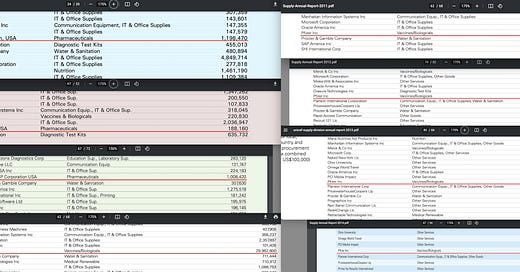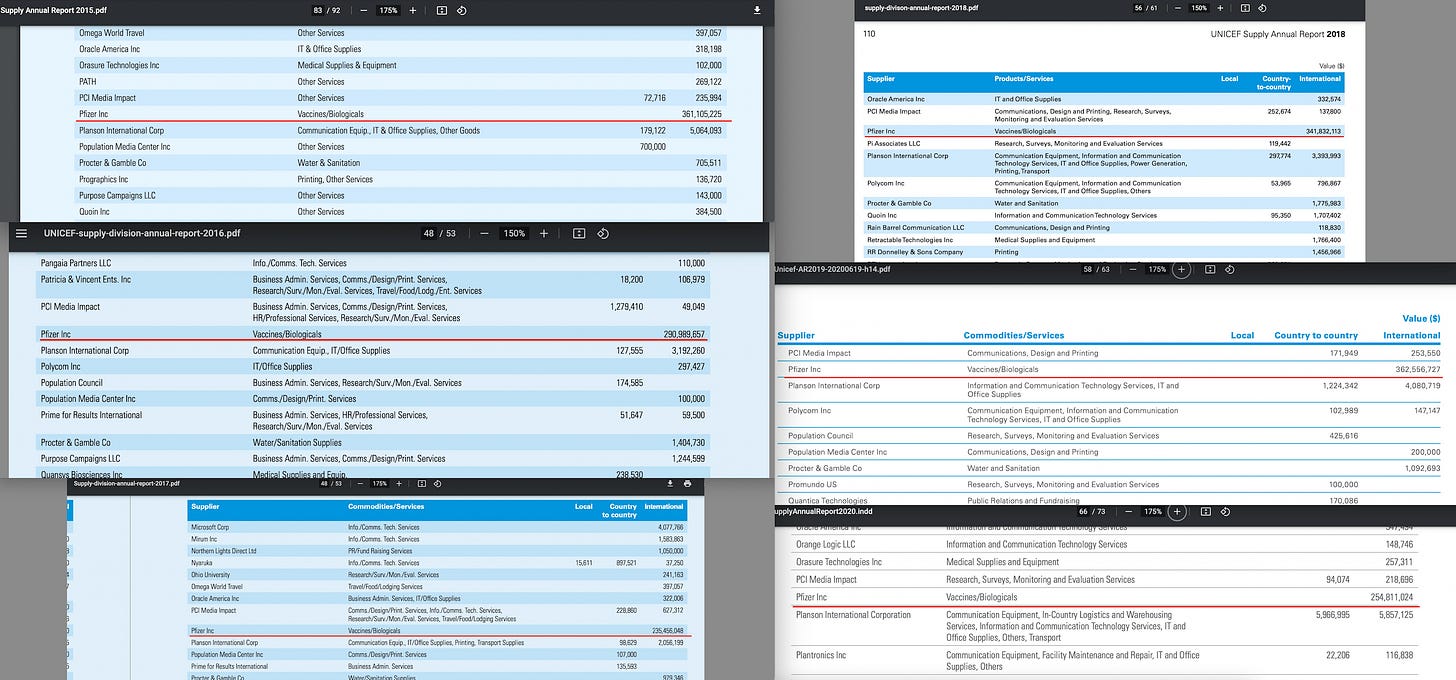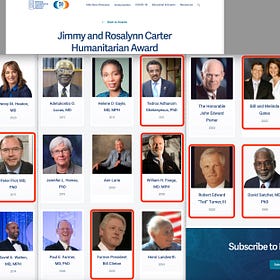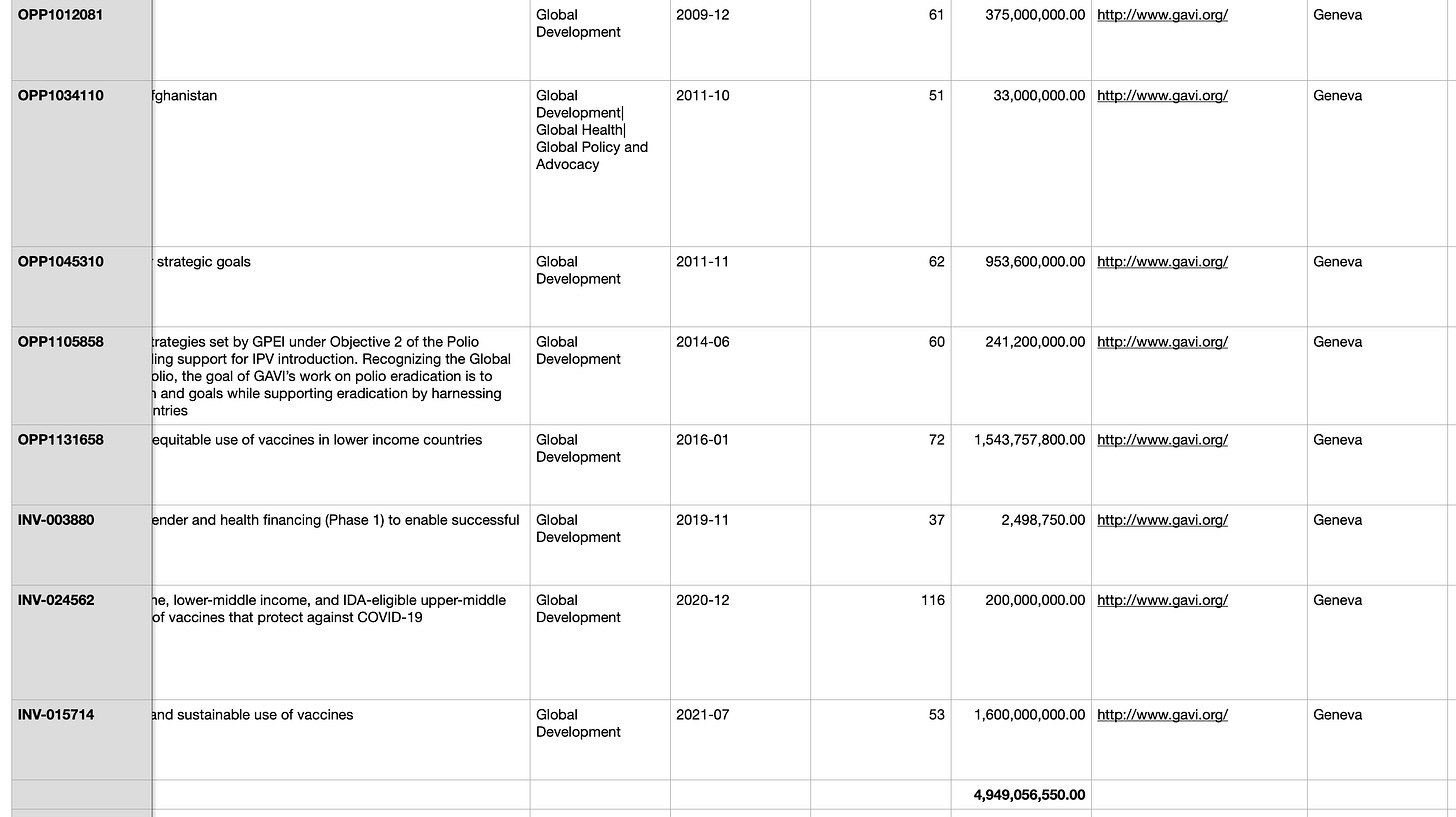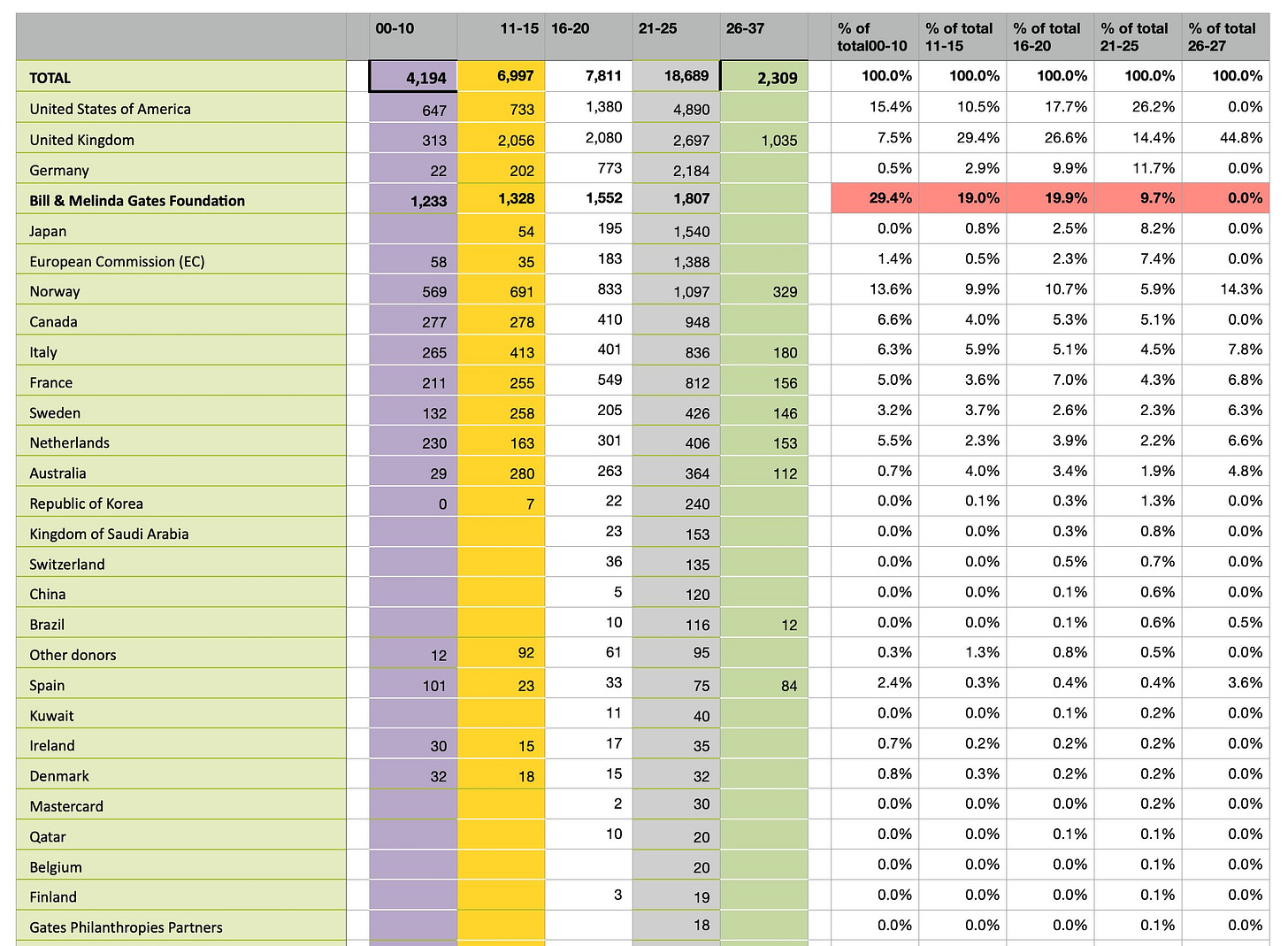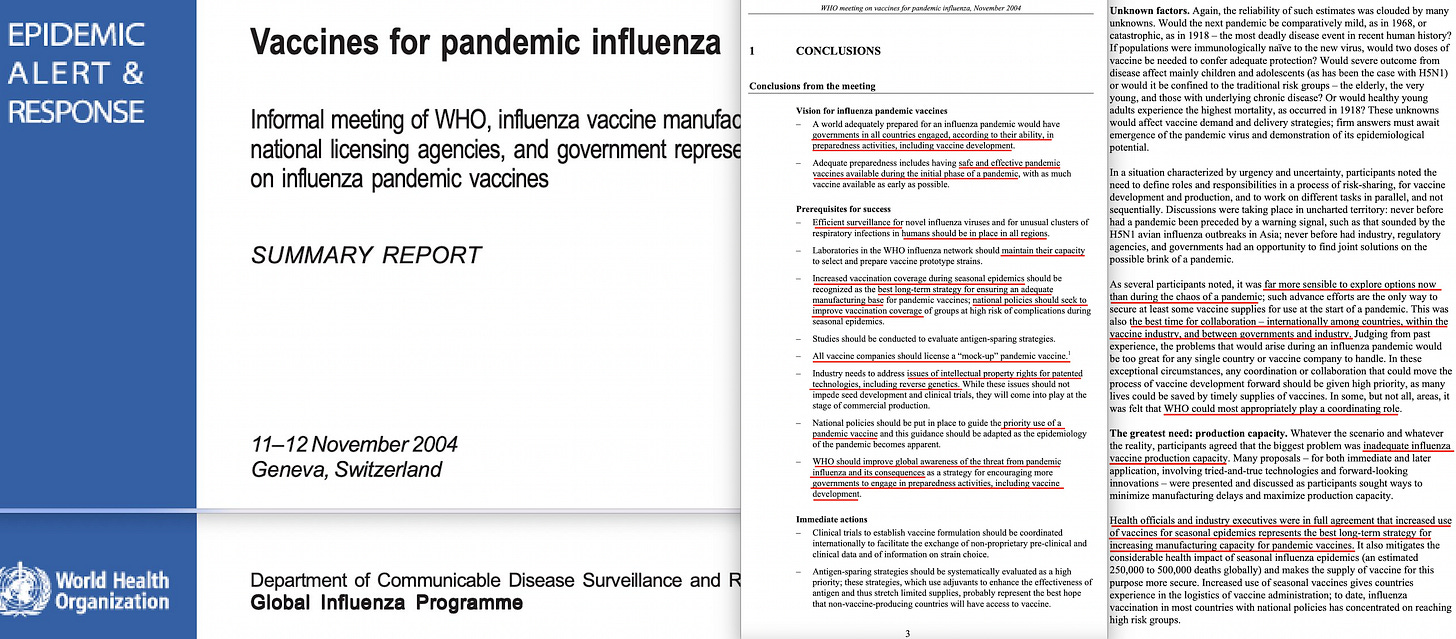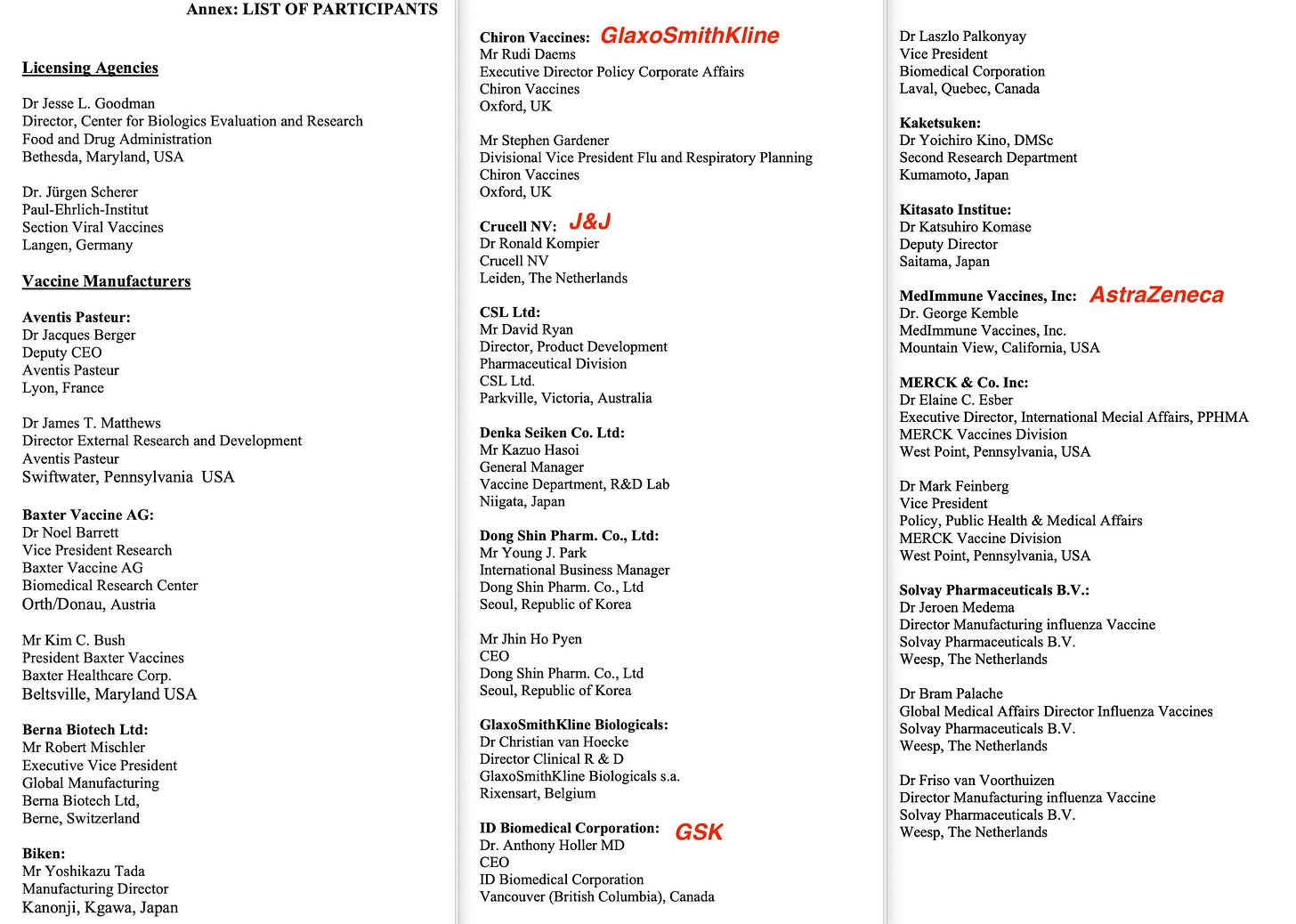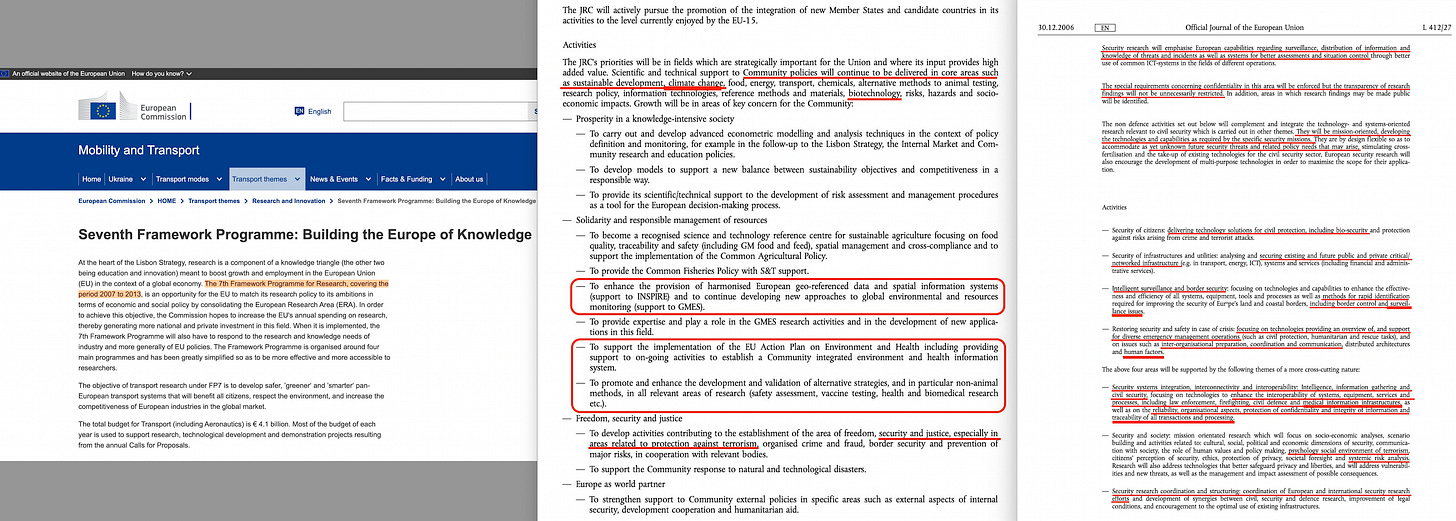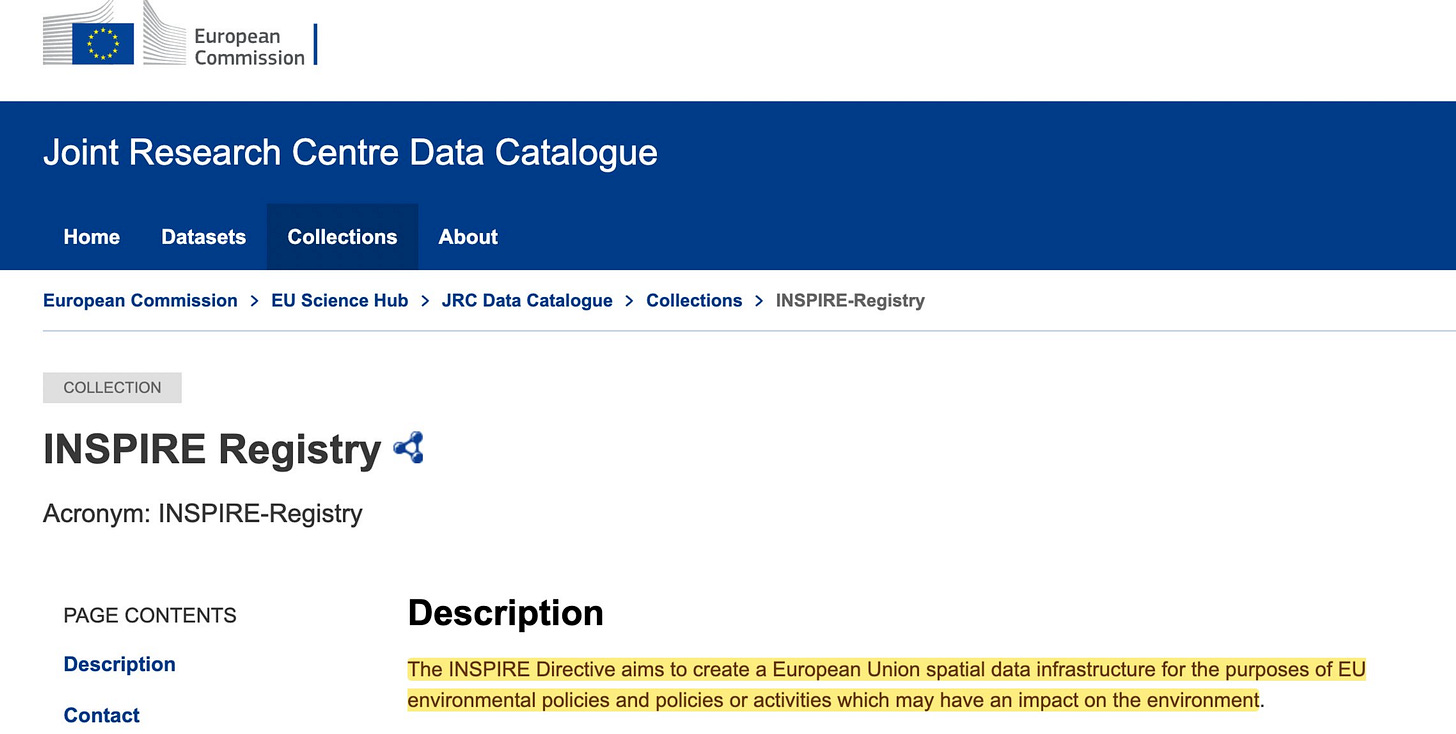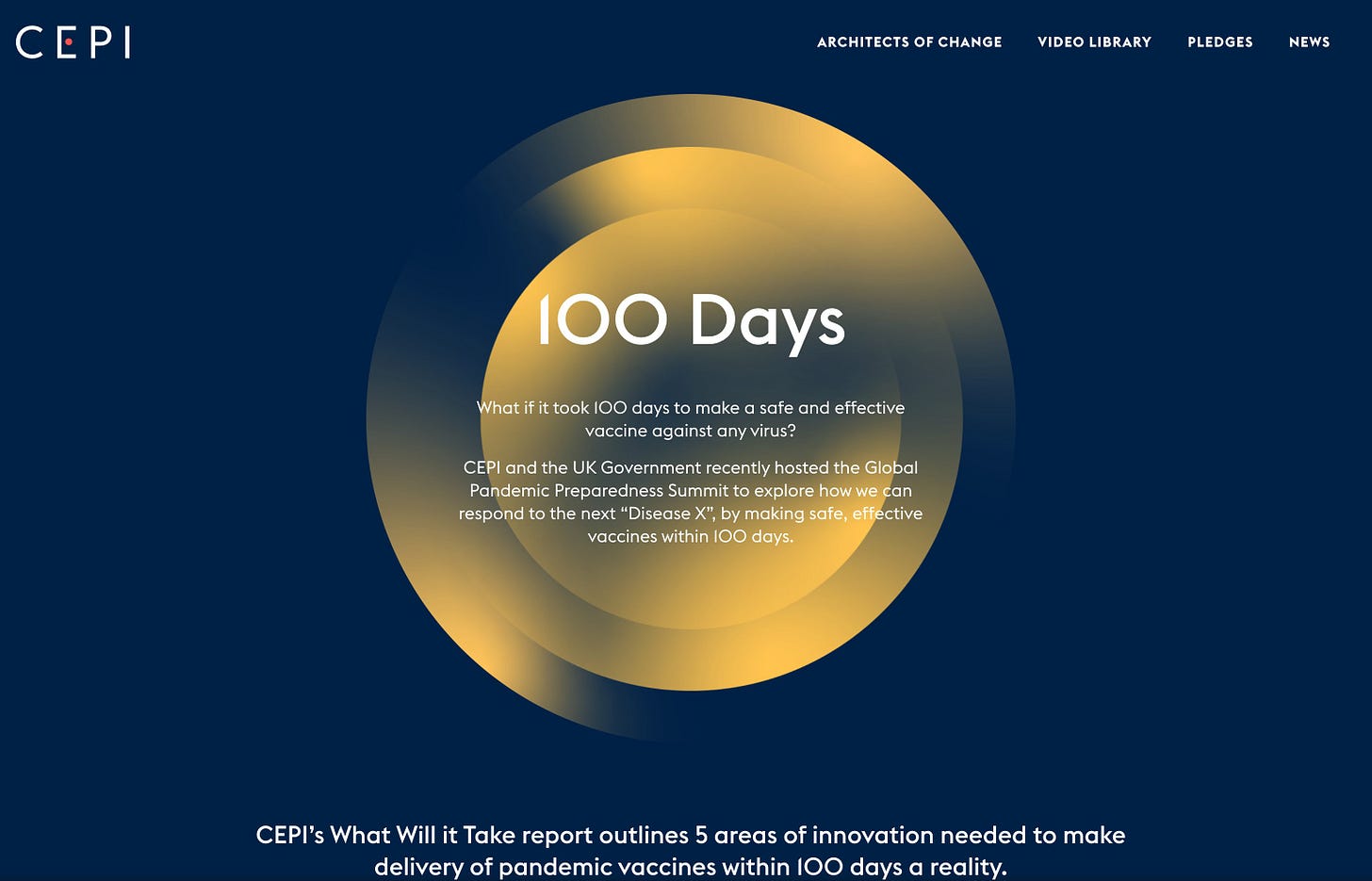One Health - Part 3: Vaccines
Let’s kick off the topic of vaccines somewhere different; more specifically, let’s have a look at the UNICEF unnual supply reports. See, lots of spreadsheets tell stories, and these are certainly no different.
In the years 2007-9, Pfizer sales to UNICEF amounted to no more than $2.4m in total. But that changed significantly in 2010.
In 2010, the equivalent number was just short of $30m, and the ballistic path sent it to $137m in 2011, $175m in 2012, $219m in 2013, and just a whisker off $300m in 2014. Yes, really - a 100x increase in less than 5 years.
From 2015 to 2020, the number remained around the $300m figures, but 2021 would clearly present a problem, given the rollout of the hugely profitable c19 vaccines. But every problem has a solution, and in this case, it was simple.
They stopped reporting the figure.
-
Parts 1 and 2 of this story can be located here.
One Health - Part 1: 1992 - 2020
Bringing One Health to Covid-19. - I grew up in Denmark, and thus, the mere mention of the year 1992 brings back fond memories of sitting 3 inches off the television, and going to the pub a with friends, where we drank to excess and watched football.
One Health: Part 2 - Rockefeller, NTI & CORDS
Let’s have a look at the ‘Jimmy and Rosalynn Carter Humanitarian Award‘. Because in the context of One Health, it’s a remarkable list of recipients. It’s not just Farrar in 2019, Piot in 2017, but Tedros received the award in 2011, Foege in 2008, and John D Rockefeller in 2001. Although those deserve attention for sure, the three I wish to highlight are
-
The next batch of spreadsheets we can suitably investigate are the Rockefeller annual reports. Because these have a very interesting pattern of disclosure. First, 1998-2000. Funding in a particular area of interest increased markedly.
Very little prior to 1998.
2001-3 carries on the same vein, plenty of investment in disease and information surveillance.
From 2004 onwards, the granularity of information changed. Dedicated surveillance initiative grants sections are removed, but the initiatives themselves very much carry on. Of course, the Manhattan Principles, delivered in 2004 at the Rockefeller Center, could have influenced that. Why operate out in the open?
Their 2009-10 grant recipients are furthermore interesting for a couple of reasons - they announce a $22m total spend on disease surveillance networks, and outline NTI, WCS, and LSHTM as grant recipients.
2012 and 2014 reports are a bit more direct. 2012 calls for a global disease surveillance network. 2014 sees $2m allocated for CORDS, $4m goes to the World Bank, and even the WEF and the WHO receive their cut.
The 2014 report can be found here, it’s gone from the web.
-
So what exactly took place in the late 90s that would have led to this surge in surveillance-related investment? Well, first off, we have this, which indeed appears highly relevant to the topic, and a very early call, too - 1998.
But rather than focus on contents, let’s have a look at the participants. And - setting aside the WHO itself (purple), and the lawyers (orange), we have the Children’s Vaccine Initiative (pink), public organisations (blue), institutes or academia (green), pharmaceuticals (red), and those in pink. And who are they, you wonder.
First, we have the Rockefeller Foundation itself, who you should be familiar with by now. Next, the International AIDS Initiative, whose wiki page you can find here…. aaaand it’s directly linked to Rockefeller.
Next up, the Children’s Vaccine Initiative… which was later rebranded… GAVI.
Yes, yes, shocking, right? Well, you will never guess who funded the CVI. Oh wait, there they are again.
Of course, Gates took over the heavy lifting just a few years later. They have donated a cool $5bn over a 12-year period.
In fact, GAVI is now a giant, but Gates is no longer in the top 3 in terms of donations. The heavy lifting is now courtesy of the United States, Germany, and the United Kingdom.
From the 1998 document, the four in green, representing institutes or academia are below. They are all in trade, intellectual property, or vaccine research. None in public safety or the likes.
Public organisations include the World Bank (of course), UNICEF - who are the recipients of childhood vaccination programs, and public vaccine research institutes. What they contributed is somewhat opaque.
And in red - all 12 of them - work directly for the pharmaceutical industry. Kind of ridiculous, isn’t it? Who’s there to oversee public interest? The WHO? Well, 3 of 4 worked in vaccine supply, of which Amie Batson… also worked with the World Bank, and USAID. Impressive repertoise in the context of One Health.
And to finish off this report, a quick look at the summary, because it’s essence exactly the same we see repeatedly.
IP issues, local production, further investments in R&D, and… pushing for an increased uptake in existing vaccines.
There are furthermore additional developments related to 1998, one of which will quickly be touched upon later in this article.
-
With all of this in mind, the WHO in November, 2004, met up with most big pharmaceuticals - with one notable exception. The topic of the meet was pandemic preparedness, and where pharma came in — vaccines. This document has very little to do with surveillance, in fact, there’s only a few minor related paragraphs. Besides vaccines, realistically only one other thing is touched upon. Money.
In addition to money, they furthermore wanted liability protection, regulatory complacency, long-term contracts (guaranteed income), increased uptake in flu vaccination - for purposes of capacity building, you see. To protect us.
The WHO should act in coordinating capacity. Check!
The issue of intellectual property also came up, and public-private-partnerships. And they - of course - requested a liability shield. Which, of course, they received.
They finally requested an accelerated pathway of delivery.
If this document was their list for Santa, Father Christmas certainly delivered; they practically received everything they requested, though some of that money just might have been earmarked ‘campaign contributions’.
Participants included just about every vaccine manufactorer, apart from one. Spot which one?
The name missing from that list, of course, is Pfizer.
And why is that important? Here’s why.
-
I briefly mentioned the 2003 WCS forum, where ‘One Health’ was given its name in part 1. The event can be found here.
What’s interesting in this context isn’t specifically what was said. It’s that the paper on the forum was released two years later in 2005, with a very interesting addition.
Because although USAID had representatives present through Gary Mullins, Laurel Neme and indirectly Steve Osofsky - who would go on to co-author the Manhattan Principles in 2004 - and Wellcome Trust was represented by Mary Phillips, and Delphine Purves - Pfizer had no representation at the WHO 2004 meet, nor the 2003 forum where ‘One Health’ was realistically first named.
It’s difficult to drum up information on Bourla’s early years, but we do know a little bit. Does it smell just a little bit like Pfizer realised they were missing out on a massive opportunity, perchance?
We do know Pfizer acquired a portfolio of vaccines in 2008 via Schering-Plough.
And in 2009, Pfizer bought Wyeth Pharmaceuticals for $68bn in a cash transaction. The reason isn’t hard to work out, per BMJ in 2009 - ‘The rise of more lucrative patented vaccines—led by Wyeth’s Prevnar for pneumococcal disease, the first vaccine to generate more than $1bn in annual sales‘.
… though Forbes, in 2009, declared that the market for flu vaccines wasn’t large. How wrong they were.
And in late 2009, Pfizer launched a Swine Flu vaccine for the animal market.
-
To quickly sum up Pfizer’s role in this;
Pfizer missed out on the 2003 Wildlife/Livestock WCS forum in South Africa, where ‘One Health’ was mentioned by title.
Pfizer also missed out on the 2004 WHO meet with big pharma.
However, when the output of the 2003 WCS meet was released in 2005, Pfizer was named a sponsor, in spite of having had no presence whatsoever.
Bourla worked in their animal division at this time.
Pfizer acquired a portfolio of animal vaccines via Schering-Plough in 2008.
And in 2009, Pfizer acquired Wyeth Pharma, who saw significant revenue and profits through their Prevnar vaccines.
-
And now for something completely different.
-
Who’s heard of TransVac? Here’s their webpage. You can submit your application.
Application for what?
Stop asking silly questions. To become a vaccine developer, of course.
What, you say? Where on earth did that come from? Well, from the 7th Framework Programme of research, an EU program which ran during the years… 2007-13. Here’s the specific legislation.
The legislation - from 2006 - details 'climate change' already back then but several parts here are positively One Health-esque ... Community integrated environment and health... ... vaccine testing, health and biomedical research, and it also explicitly references INSPIRE, which is a geospatial database system, to be used for environmental purposes. Ie, surveillance.
But, yeah, read the final page on the right hand side below. Would appear they had a hunch something just might be coming down the road, no? Protection, security, medical information infrastructure…
… sustainable management of resources, … oh yeah, and total surveillance.
Anyway, back to TransVac. They were advertising these training programmes only in 2022, it’s a 14-module course, and you can feel sure that this sort of education requires the finest top talent. After all, we are speaking of vaccine development.
I mean, it has to be the top-top talent, because after all, the 100-day initiative… speaks for itself. Accelerated trials. Liability waiver. People being left behind should they experience a serious adverse effect. Implied risk by mass-rollouts.
The modules no doubt take months and months to complete, right? And these require at the very least a bachelors in a relevant field, no?
Wrong. Most modules require little if any prior training, and take just days to complete - and some of those days are not even full days.
In fact, I went through all the modules, and gathered requirements, and duration per module, just to work out the total amount of days to complete the full course.
A number of the modules require prior training, but most can be completed via Udemy. The only two which require specific prior training are modules 9 and 10 - and while 10 does not require even a degree specific to vaccine development, 9 just specifies ‘… process development’.
And if you pass these requirements, then the full course takes 36 days, including half-days. Yes, really.
And who are the madmen who put together this program?
Here they are. It’s MHRA. Public Health England. Pfizer. AstraZeneca. PaulEhrlich. PATH. Novavax. EMA. You name it.
Yes, the 36-day educational program in vaccine development was put together by all the big pharmaceutical companies… and the public health organisations tasked with their oversight.
Facetiousness and jokes aside - cutting educational standards will degrade the products. Vaccine development should require THE top level educational standards, in particular because of the legal immunity provisions, but also because compensatory standards are terrifyingly bad.
As a libertarian, but I find this absolutely terrifying. These are people's lives, and this is nothing short of gambling with peoples health in exchange for money - and those who should act in the capacity of protecting people from reckless corporate practices - the government agencies - are in on in.
And to finish it off, they even rub it in - 'New Affordable Safer Better Vaccines'.
And just to source INSPIRE above -
And here’s the 100 day pledge.
-
And before we finish, here’s why I don’t think this tells the full story.
Because in parallel to the Rockefeller Foundation’s support of childhood vaccination, we saw the Rockefeller Brother’s fund jump into the ‘Global Interdependence Call’.
-
Stick around for part 4.

